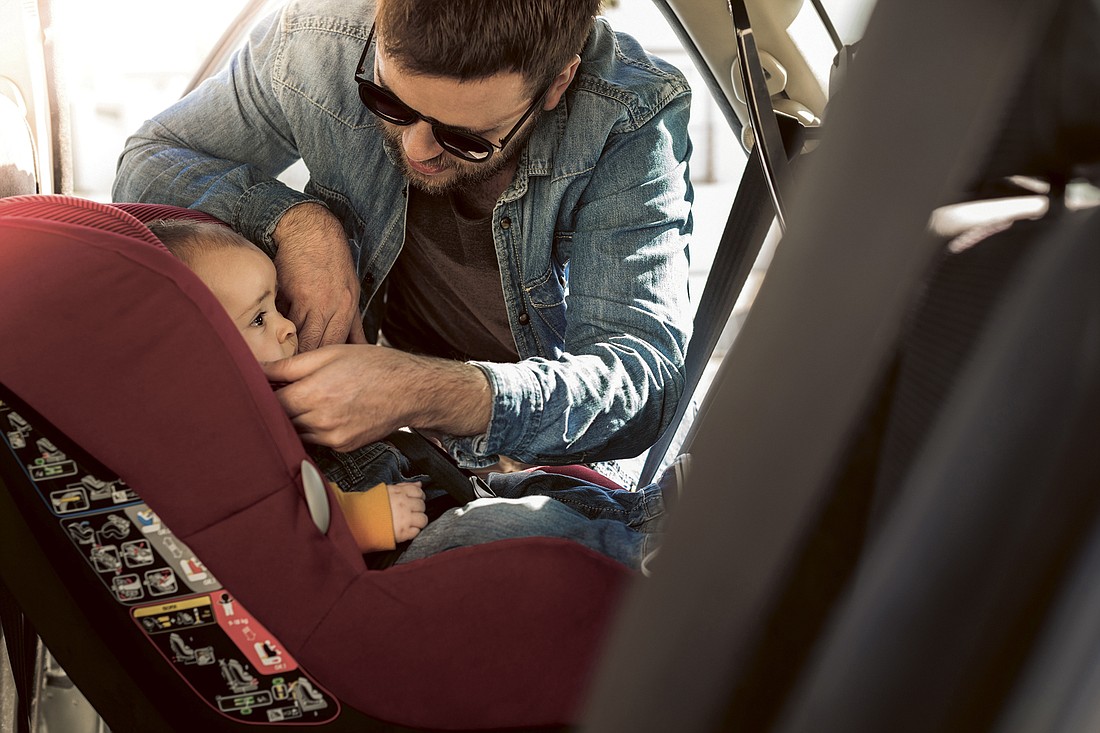- April 18, 2024
-
-
Loading

Loading

With summer being the prime time for family road trips and traveling, ensuring the safety of all passengers in your vehicle should always be part of any pre-vacation preparations.
According to the American Society for the Positive Care of Children, motor vehicle crashes are the leading cause of death in children in the United States.
The ASPCC also states an estimated 59% of car seats and 20% of booster seats are installed or used improperly. That means it’s worth double-checking your child’s car seat to ensure that it’s installed properly before taking off on a road trip.
Carrisa Johns — the Occupant Protection Program coordinator for the Orange County Sheriff’s Office — is a certified car seat technician who also is the OPP safety instructor at Children’s Safety Village of Central Florida. When it comes to car seats, she has seen thousands of them over her 16 years as a car seat tech.
Johns said the first step in ensuring proper car seat safety is choosing the right one for your child — and your vehicle.
“What’s really most important is that they get the seat that fits their child,” Johns said. “It has to be the right compatibility with the vehicle — it needs to fit both the child and the car. It’s aways a bonus if it fits your budget, but you want to make sure you’re able to use it correctly and consistently every time. Having them in the proper type of seat is most important over brand and style.”
When choosing a car seat, Johns recommends parents go to the store and play with the car seat models on display to find the one they are most comfortable with buckling, unbuckling and adjusting. If you don’t know how to make the changes and adjustments, you may not do it right and in turn your child is riding with it fitting incorrectly, which puts them at risk, Johns said.
Regarding the length of time a child should be in a car seat, and which direction he or she should be facing, Johns said most certified car seat techs follow the American Academy of Pediatrics guidelines. Currently, AAP recommends children remain in a rear-facing car safety seat as long as possible, until they reach the highest weight or height allowed by their seat.
Additionally, the back seat is always the best place for a child to be. The ASPCC states the car seat should be installed in the middle if possible. However, behind the driver’s seat is the second-best location.
Regarding improper restraints, there are two categories: mistakes made with the car seat installed in the vehicle, and mistakes made with the child buckled into the seat.
“When we think about the mistakes they make with the child buckled in, there’s three main places we tend to see them go wrong if they do,” Johns said. “The first thing would be what height or slot the harness comes out of, depending on the direction they’re facing. The second is how tight the harness should be, and the last part with the harnessing is the harness retainer or chest clip.”
With installation in the vehicle, Johns said, there are many more ways a seat could be installed improperly. These depend on the type of car seat, what direction it’s facing, what kind of vehicle you have and the vehicle’s anchoring system.
“The beauty of it all that is that our program, along with many others across the country, offer free car seat installation technicians,” Johns said. “We are out in the community every single month and we will check to make sure it’s installed correctly.”